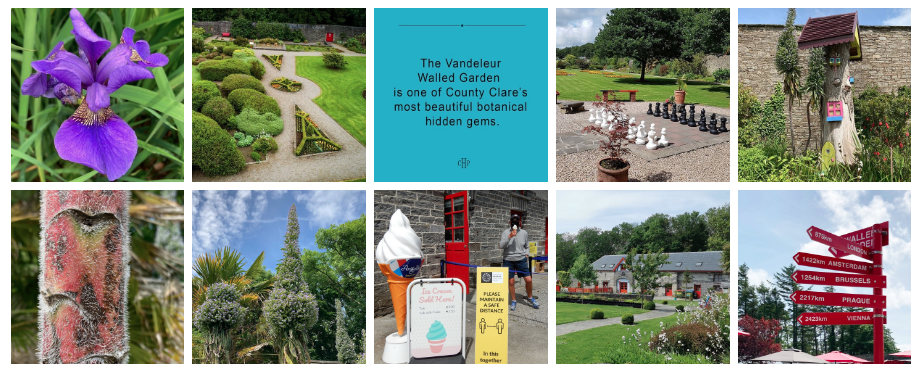
Golf Heritage Society Experience
GHS Outing at Latrobe Country Club — Arnold Palmer Country
The first time I went to Europe I was eighteen years old. I came back to the U.S. six months later and was a different person. When I went to the Golf Heritage Society Annual Conference in Pittsburgh I came back five days later and was a different person. I was amazed and delighted beyond words. The people I met, the things I saw, the laughter I shared — the complete GHS experience — changed me.
Let’s start with the GHS outing at Latrobe Country Club — Arnold Palmer Country. What an extraordinary event from top to bottom. Thank goodness the weather was superb. I’m sure our host and incoming GHS Vice President, Bob Muir, was sweating bullets over that and a myriad of other items. Like having an outdoor wedding, right?
It couldn’t have been more perfect. And, so many of us had our picture taken with Arnie’s ancient Toro tractor. It was a special way to feel a connection to The King, and all that he represented, both on and off the course.
Then there was the energy of longtime Latrobe fixture, and Arnie’s Amigo Number One: John Rusbosin. No detail was overlooked. Whatever the question, John always had the answer. He worked tirelessly and always with a smile.
You ask about other Arnie’s Amigos? Front and center were Carol and Denny Clawson. These people are so generous and genuine. Among other things, they organized the putting contest by the first tee and raised a ton of money for the Winnie and Arnold Palmer Foundation.
I was supposed to help out but I found myself so engaged with the huge number of people who registered to play — some hickory, some classic clubs, all I did was take six tries at hitting a gutty ball into a far away hole and barely came close.
This was really my first exposure to some of the 900+ members who are active golfers and there are many. The men sometimes wore plus-fours, and Gillian Alexander’s mother and grandmother, Clara Lochmiller, and Carolyn Lochmiller, dressed in period costume — complete with parasol. They all lent an elegant note to the genial atmosphere. Speaking of notes, a special shout out goes to the Greater Latrobe School District Band that sent our spirits soaring when they played the Star Spangled Banner.
When Bob Muir and his foursome, which included Leila Dunbar, George Petro, and Pio Adamonis, made the turn and teed off on the first hole, myself and my friend, Mary Nokes, who came up from the DC area, decided to follow their group. When we got down to the green, Bob said, “If you go across the road and continue up the hill, you can see Arnold’s office. There is an umbrella over the door.”
Mary and I took off in our cart and did exactly that. Bob also pointed out, “On the right is the family home and on the left is a modern house where Arnie lived with Kit after Winnie died.” That was a special side trip that very few people got to do.
CLICK ON THE ARROWS TO VIEW PHOTOS FROM THE GHS ANNUAL CONFERENCE 2021
Rich Five Days with Many Events
Golf Art Symposium: This was organized and moderated by Frank Cantrel, a board member and art lover. This segment was a wonderful opportunity to see artwork in many media up close and personal. The three artists, Steph Moraca, Keith Campbell, and Bob Fletcher, all contributed works to the auction. They enlightened us with their answers to Frank’s questions about what triggered their interest in golf art, what was their process like, and how did they handle commissions. Very entertaining and educational. (Linda Hartough and George Lawrence were meant to join us remotely but the hotel internet let us down that morning.)
Presentations: There were many. I was particularly fascinated by Rand Jerris, Ph.D, the Senior Managing Director, Public Services of the USGA. Rand singled out sheet music focused on golf that they held in their massive collection. It was truly fascinating. Along with Peter Lewis, he is publishing a book about this unique category of literary works. Rand also showed us renderings of what the new USGA museum will look like in PInehurst including floor plans for the 16,000 square foot building.
Banquet Dinner: I had asked Jan Bel Jan, the immediate past president of the American Society of Golf Course Architects to sit with me for this dinner. She was easy to spot in her red tartan jacket — which is a tribute to Donald Ross — one of the founders of their organization in 1946. The keynote speaker was the legendary Bob Ford, longtime Head Professional of both Oakmont Country Club and Seminole Golf Club in Juno Beach, Florida.
Jan, a native of Monroeville, PA, knows Bob well. Her entire family also knew the Palmers intimately. In fact, Jan told me that her uncle Carl often played in pro-ams with Arnold Palmer decades ago. Arnold was the amateur! (Watch this space — more to come on Jan Bel Jan.)
There were a great many Awards and Recognitions, including the Harris-Wolke Award, Golden Quill Award, and GHS Advancement Awards. It is hard to express my admiration for the dedication of so many people for so many years. Just being in the audience while the accolades were bestowed was so heart warming. It is hard to put into words.
Another highlight of the dinner was the ceremony of the four inductees to the Golf Heritage Society Hall of Fame. They are: Pete Georgiady, Dr. Michael Hurdzan, Glenn Moore, and Bill Reed. These extraordinary men represent nearly 200 years of dedication and vitality to the GHS.
The trade show: I know that the GHS was originally called The Golf Collectors Society. As a new member, and a new board member, I got to really see the heart and soul of this organization.
CLICK ON THE ARROWS TO VIEW PHOTOS FROM THE GHS ANNUAL CONFERENCE 2021
A group of ardent collectors who LOVE the game, its history and traditions!
This is truly an amazing group of ardent collectors who LOVE the game, its history and traditions. You will not find a more passionate core group of golf enthusiasts anywhere in the world. Unless you consider the British Golf Collectors Society, that was formed AFTER the GHS. That’s right. We predate them and we are celebrating our 50th anniversary!
Here’s to us! We are awesome. And with your help we will grow our membership and brand awareness exponentially by leaps and bounds.
If anybody is looking for passion and appreciation of the heritage and history of golf — it’s here! And nobody embodies all these qualities more than our esteemed president, Dr. Bern Bernacki. Big thanks also have to go to Bern’s wife, Mary, who is an angel and guiding light to our inspired leader, and therefore, our entire organization.
Next up: The GHS is scheduled to participate in the GIS/Golf Course Superintendents Association of America conference in February in San Diego.












 A second nine was added two years later with the involvement of another Scot, George Coburn, who hailed from East Lothian. A skillful player, Coburn, at just nineteen years of age, was engaged to replace Mungo Park as the Club professional. He had gained valuable greenkeeping experience with Old Tom Morris, and is even thought to have assisted Old Tom with the New Course at St Andrews when he designed it in 1895.
A second nine was added two years later with the involvement of another Scot, George Coburn, who hailed from East Lothian. A skillful player, Coburn, at just nineteen years of age, was engaged to replace Mungo Park as the Club professional. He had gained valuable greenkeeping experience with Old Tom Morris, and is even thought to have assisted Old Tom with the New Course at St Andrews when he designed it in 1895.


 When we drifted into the member’s inner sanctum of the Pickeman Room, John Power, the Captain, pointed to the only open window and said, “You know Gary Player, the famous golfer?”
When we drifted into the member’s inner sanctum of the Pickeman Room, John Power, the Captain, pointed to the only open window and said, “You know Gary Player, the famous golfer?”
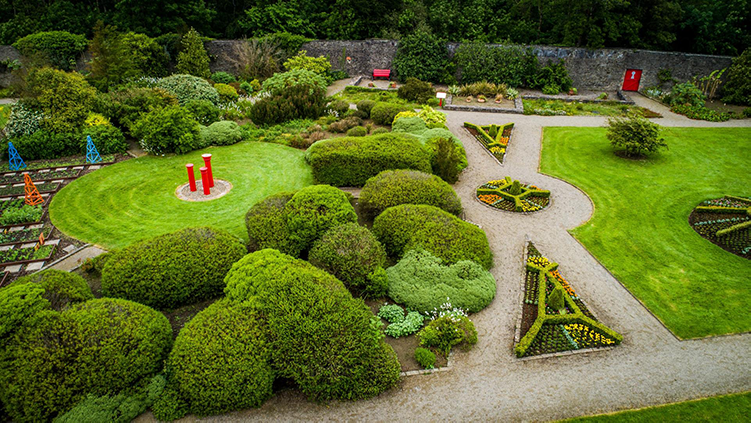
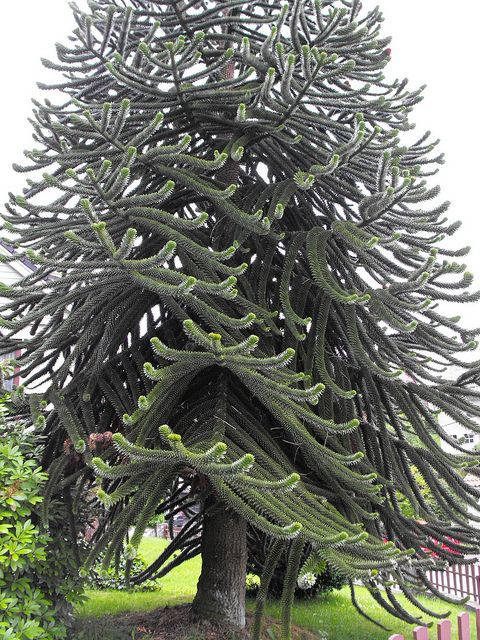 Before we left the house I searched online to make sure Vandeleur was open. I also read it had an exceptional collection of trees from oak and mountain ash to the quirky monkey puzzle tree.
Before we left the house I searched online to make sure Vandeleur was open. I also read it had an exceptional collection of trees from oak and mountain ash to the quirky monkey puzzle tree.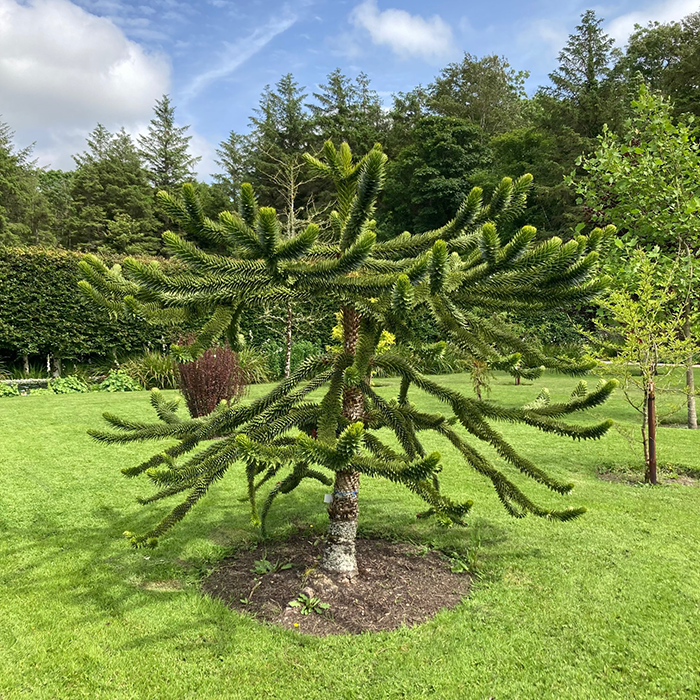 “Sorry to bother you but could you tell me where is the monkey puzzle tree?”
“Sorry to bother you but could you tell me where is the monkey puzzle tree?”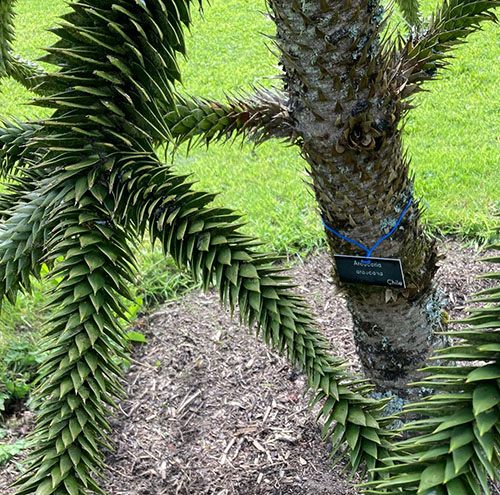 “How long would it take to get this tall?” I asked.
“How long would it take to get this tall?” I asked.